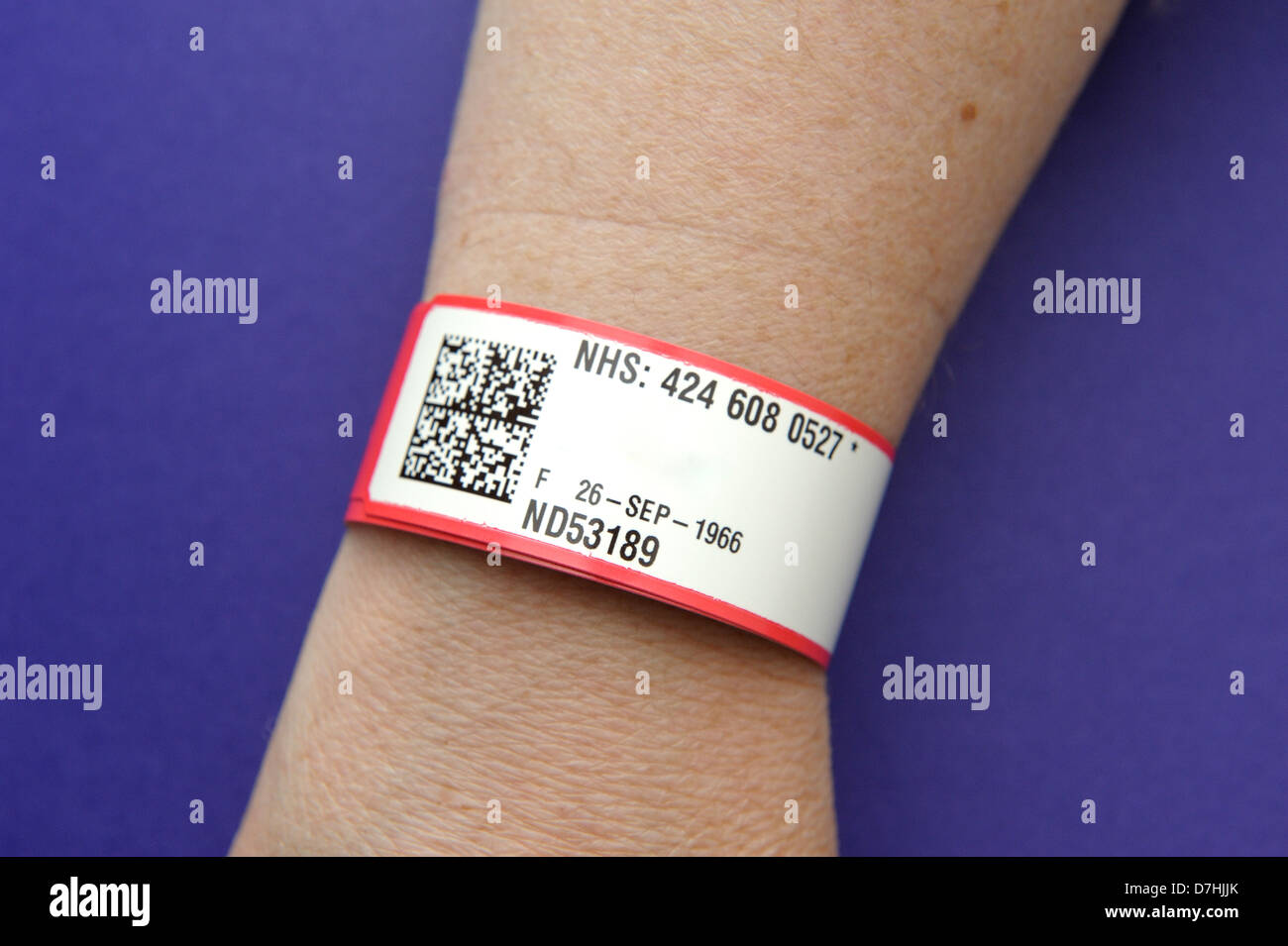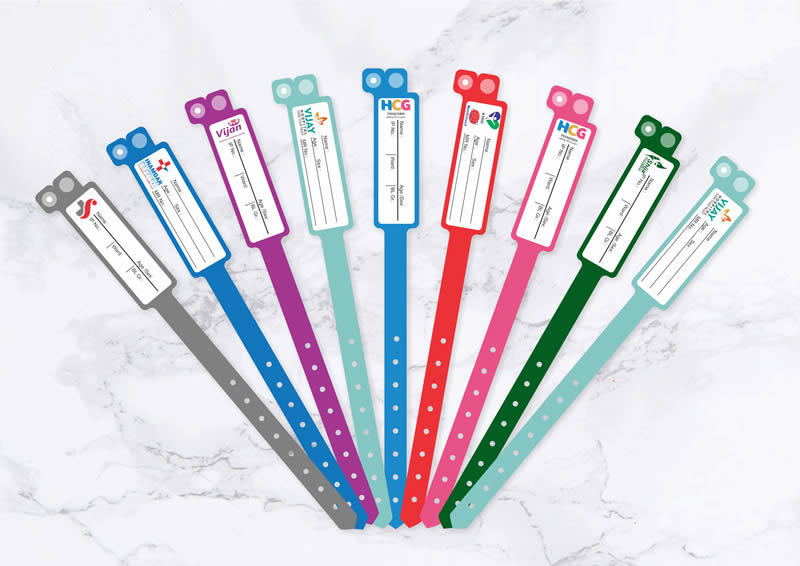Checking Out the Numerous Kinds of Patient Identification Band Used in Medical Facilities
In the complex world of healthcare, the vital function of Patient Identification bands typically goes unnoticed. These bands, differing from basic paper wristbands to sophisticated RFID bands, develop the foundation of Patient security methods, making sure precision in Patient Identification.
Understanding the Value of Patient Identification Bands
While they might appear like mere accessories, Patient Identification bands play an essential role in clinical centers. These bands serve as a crucial device for verifying Patient identity, protecting against clinical errors associated to misidentification. Patient Identification bands also aid in enhancing management tasks, making sure exact record-keeping and billing.
Traditional Paper Wristbands: Their Usage and Limitations
Typical paper wristbands have actually been a staple in Patient Identification across various clinical facilities. While their use prevails, they nurture certain constraints that might affect their efficiency in Patient management. This section will certainly concentrate on the range of their application and the inherent drawbacks connected with their usage.
Paper Wristbands: Use Scope
In the realm of Patient Identification, paper wristbands have long held a critical role. These bands are usually made use of in outpatient setups, where the Patient's stay is momentary. The wristbands have vital details such as the Patient's name, date of birth, and a distinct Identification number. This straightforward, yet efficient system, enables medical professionals to rapidly and accurately determine people, making sure the correct treatment is carried out. Paper wristbands are additionally utilized in emergency circumstances, where quick Identification is extremely important. Their use encompasses events like blood contribution drives and mass vaccination programs, additionally emphasizing their adaptability. Despite developments in modern technology, the humble paper wristband continues to be a dependable and cost-efficient solution for Patient Identification in various health care circumstances.
Limitations of Paper Wristbands
Regardless of their widespread use, paper wristbands are not without their disadvantages. In addition, paper wristbands frequently lack the technical capacities of even more modern choices, such as barcoding or RFID chips, restricting their performance to simply presenting created info. Paper wristbands can trigger pain or skin irritability to some individuals, particularly when put on for extended periods.
Barcoded Wristbands: Innovations in Patient Identification
While Patient Identification has long been a crucial facet of health care, the advent of barcoded wristbands represents a considerable leap forward. These bands utilize the simplicity of barcoding modern technology, enabling for Patient info to be quickly checked and accessed. They enhance the speed and precision of Patient Identification, reducing the danger of clinical mistakes connected to misidentification. Barcoded wristbands are economical, simple to generate, and get rid of handwriting errors typical with manual systems. They are not without limitations. While they offer improvements over standard bands, the barcode can come to be worn or smudged, rendering it unreadable. Despite this, barcoded wristbands continue to be an important tool in modern health care setups, symbolizing the crossway of technology and Patient treatment.
Radio Regularity Identification (RFID) Bands: a Step Towards Futuristic Medical Care
The development of Patient Identification bands has caused the introduction of Radio Frequency Identification (RFID) Bands (patient identification band). These cutting-edge tools existing essential advantages for medical care centers, supplying a more effective and highly progressed means of Patient Identification. The implementation of RFID in health care is a substantial step towards a much more advanced strategy to Patient management and security
Recognizing RFID Bands

RFID Bands: Trick Benefits
Mostly, these bands improve Patient safety by supplying precise, instant Identification, thus minimizing clinical mistakes. RFID bands can store a huge amount of Patient information, including clinical history and allergies, making it possible for individualized care. Overall, RFID bands stand for a considerable development in Patient Identification innovation, benefiting Learn More both individuals and health care providers.
Carrying Out RFID in Health Care
These bands provide a seamless method to track and determine clients, guaranteeing their security and enhancing efficiency in therapy procedures. RFID bands decrease medical errors by supplying precise Patient Identification, which is important in stopping misdiagnosis or incorrect medication management. Therefore, the application of RFID bands is a considerable step towards enhancing Patient security and medical care delivery.

Color-Coded Wristbands: Helping in Quick and Accurate Diagnosis
In the dynamic setting of a medical center, color-coded wristbands have emerged as essential tools for swift and precise Identification of a person's clinical problem. These wristbands, used look here by clients, bring specific colors that represent different clinical problems or statuses. As an example, red might show allergy dangers, while yellow could indicate an autumn threat. This system is made to use instant visual hints to doctor, improving Patient security and care high quality. In emergency situation situations, using these wristbands enables fast decision-making. However, the efficiency of color-coded wristbands relies on the harmony of color analysis across healthcare organizations, calling for usual criteria for consistent application.
Strategies for Reliable Execution and Administration of Patient ID Bands
Accomplishing optimal use of Patient Identification bands demands a well-structured strategy for their execution and administration. Patient education and learning try these out is likewise critical; clients should comprehend the objective of the bands and the requirement for their continuous wear. It's vital to have a backup strategy in place, such as barcode scanning or biometrics, to make sure that Patient Identification is never ever compromised.
Final thought
Patient Identification bands are important in clinical centers to guarantee safety and security and accuracy. Typical paper, barcoded, RFID, and color-coded wristbands each hold distinct advantages, varying from cost-effectiveness to innovative information storage space and immediate clinical alerts. Effective implementation and administration of these bands can dramatically lower medical mistakes, boost effectiveness, and boost general Patient care. Therefore, understanding and using these Identification devices is critical for keeping high requirements in healthcare.
These bands, varying from simple paper wristbands to advanced RFID bands, form the backbone of Patient security methods, making sure precision in Patient Identification.The development of Patient Identification bands has brought concerning the emergence of Radio Frequency Identification (RFID) Bands. On the whole, RFID bands represent a considerable innovation in Patient Identification innovation, profiting both clients and medical care companies.
RFID bands decrease clinical errors by providing precise Patient Identification, which is crucial in protecting against misdiagnosis or incorrect medicine management. Patient education and learning is also important; clients should understand the objective of the bands and the demand for their constant wear.